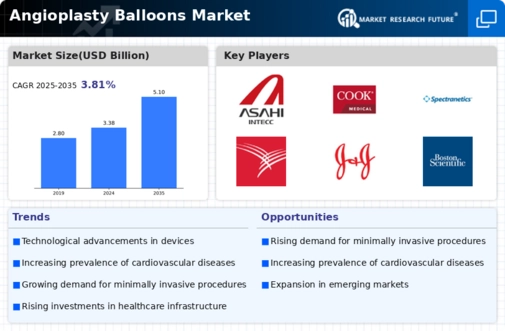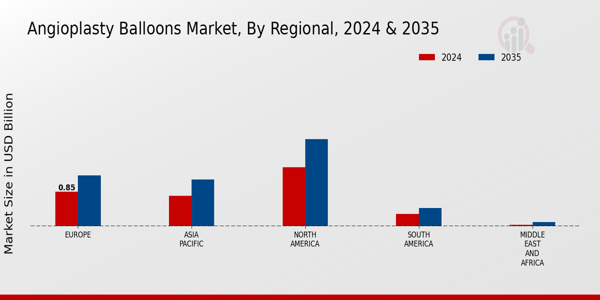Market Share
Angioplasty Balloons Market Share Analysis
The Angioplasty Balloons market plays a critical role in interventional cardiology, addressing arterial blockages and restoring blood flow. Companies operating in this market deploy diverse strategies to effectively position themselves, ensuring their angioplasty balloons gain significant market share in the competitive cardiovascular care landscape. A common form of primacy strategy is the perpetual innovation in angioplasty balloon technological domain. Firms spend on research and development, which leads to better product design, alternation in balloon substance as well as the methods of inflation. These improvements could include less rigid and more portable balloons, features for rapid inflation/deflation or a system of upgraded navigability, which can create a noticeable difference in the market because other existing products are unlikely to have these attributes. One of the important strategies include various educational schemes for the health workers especially those practitioners in cardiology. Various companies host seminars, symposiums, workshops on angioplasty balloon technology as the training programs; to bring clinicians to the latest improvement made in angioplasty. The initiatives lead to a larger degree of awareness and adoptions of particular balloon solutions in clinical operations. Affordability is one important market positioning strategy that competitors employ. Firms minimize and re-engineer their manufacturing process to ensure competitive prices for angioplasty balloons while at the same time maintaining high quality. It then follows that cost-effective solutions are attractive to many other healthcare facilities besides the target customers, helping nonte control of market competitiveness. In the framework of innovation-oriented approach to business and development, patient satisfaction weight is high and successful companies emphasize patient-centric communication. They also offer the necessary knowledge, for those medics undergoing angioplasty procedures including advantages of specific balloon technologies. Open communication is important for positive patient-centredness and promotes a sharpened difference in the market, also contributing to customer loyalty. In the modern age of digitalization companies pay special attention to bringing a stronger on line presence and making use of various opportunities provided by digital marketing. This encompasses the provision of informational online sites, social networking interactions, and online training material. Digital platforms promote to be educational hubs where education is enhanced and seen as points of visibility that contribute greatly towards the frequency of adoption of a particular angioplasty balloon product. Offering comprehensive customer support and training services is essential for market positioning. Companies provide ongoing technical support, device training, and regular communication to ensure the optimal use and satisfaction with their angioplasty balloons. This commitment to customer care fosters customer loyalty and positive word-of-mouth referrals.










Leave a Comment